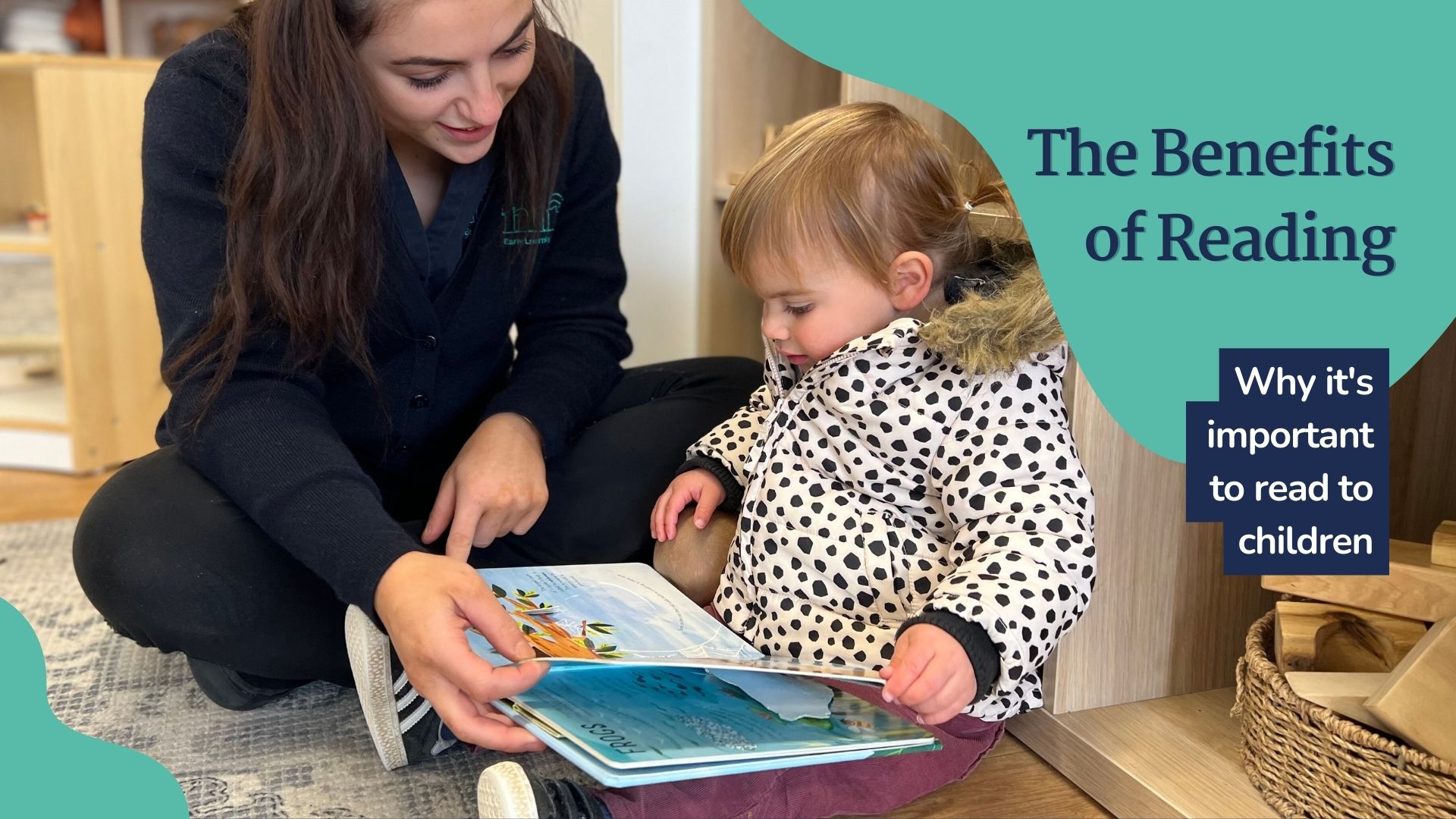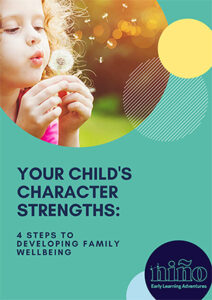Ten Benefits of Reading to Children

Reading to children is incredibly beneficial for their overall development and well-being. From their early childhood years, reading to children helps them to develop a love of reading. When they enjoy being read to, they are more likely to want to read for themselves. This is important, because reading is a lifelong skill that can help them in all areas of their lives.
It is best to start early, reading to babies as young as one month, and making it a regular habit in your child’s life. Try to read to your child every day as this will help them to develop a routine and look forward to reading time.
Ten Benefits of Reading
Below is a list of ten benefits that your child will be exposed to every time you read to them.
-
Language and vocabulary development
: Reading aloud exposes children to a rich and varied vocabulary, helping them expand their language skills. They are exposed to new words, sentence structures, and storytelling patterns, which enhance their communication skills and provides them the opportunity to hear the words used in context.
- Bonding and social interaction: Reading to children creates a special bond between the reader and the child. It offers quality time for parents, grandparents, relatives, or teachers to engage with children and build stronger relationships. It also encourages conversation and discussions about the story, promoting social interaction and communication skills.
- Knowledge: Reading introduces children to a wide range of topics, concepts, and ideas. It expands their general knowledge, exposes them to diverse cultures, and sparks curiosity.
- Improved concentration: Reading books requires focused attention and concentration, helping children develop these skills. It teaches them to sit still, listen actively, and follow a narrative, fostering self-control.
- Better sleep routine: Reading a bedtime story has a calming effect on children and can help establish a regular sleep routine. It provides a soothing transition from the activities of the day to a peaceful sleep, promoting better sleep quality.
- Introduces the concept of reading: When children are read to from an early age, they learn that reading is an enjoyable activity. It instils a love for books and literacy, setting the stage for independent reading in the future.
- Enhanced critical thinking: Books often contain lessons, morals, or complex ideas that encourage children to think critically. They learn to analyse situations, make connections, and form opinions, fostering their critical thinking skills.
- Emotional development: Books provide children with opportunities to explore various emotions and learn about empathy. They can relate to different characters’ experiences, emotions, and perspectives, which enhances their emotional intelligence and social skills.
- Imagination and creativity: Storybooks transport children to different worlds, ignite their imagination, and encourage creative thinking. They can visualise characters, settings, and events, which nurtures their creativity and helps them to think creatively and to solve problems.
- Cognitive development: Reading stimulates the brain and promotes cognitive development in children. It improves their memory, attention span, and concentration. Additionally, it helps them develop logical thinking and problem-solving skills.
-
Language and vocabulary development
: Reading aloud exposes children to a rich and varied vocabulary, helping them expand their language skills. They are exposed to new words, sentence structures, and storytelling patterns, which enhance their communication skills and provides them the opportunity to hear the words used in context.
- Cognitive development: Reading stimulates the brain and promotes cognitive development in children. It improves their memory, attention span, and concentration. Additionally, it helps them develop logical thinking and problem-solving skills.
- Imagination and creativity: Storybooks transport children to different worlds, ignite their imagination, and encourage creative thinking. They can visualise characters, settings, and events, which nurtures their creativity and helps them to think creatively and to solve problems.
- Emotional development: Books provide children with opportunities to explore various emotions and learn about empathy. They can relate to different characters’ experiences, emotions, and perspectives, which enhances their emotional intelligence and social skills.
- Bonding and social interaction: Reading to children creates a special bond between the reader and the child. It offers quality time for parents, grandparents, relatives, or teachers to engage with children and build stronger relationships. It also encourages conversation and discussions about the story, promoting social interaction and communication skills.
- Knowledge: Reading introduces children to a wide range of topics, concepts, and ideas. It expands their general knowledge, exposes them to diverse cultures, and sparks curiosity.
- Improved concentration: Reading books requires focused attention and concentration, helping children develop these skills. It teaches them to sit still, listen actively, and follow a narrative, fostering self-control.
- Better sleep routine: Reading a bedtime story has a calming effect on children and can help establish a regular sleep routine. It provides a soothing transition from the activities of the day to a peaceful sleep, promoting better sleep quality.
- Introduces the concept of reading: When children are read to from an early age, they learn that reading is an enjoyable activity. It instils a love for books and literacy, setting the stage for independent reading in the future.
- Enhanced critical thinking: Books often contain lessons, morals, or complex ideas that encourage children to think critically. They learn to analyse situations, make connections, and form opinions, fostering their critical thinking skills.
Literacy Development at Niño ELA
At Niño ELA, we support literacy development and reading through a variety of ways, with open ended literacy experiences supporting children’s cognitive development, social and emotional wellbeing and future academic skills:
-
Engaging literacy experiences available in the indoor and outdoor classrooms provide opportunity for children to develop thinking skills and imagination, laying the foundations of emerging literacy.
- Niño ELA supports children’s engagement with reading providing a focused learning pod dedicated to children’s exploration of storytelling, language, written text and letter recognition. Children can access this learning pod ongoing throughout the day providing opportunity to explore text either individually or in a small group.
- Across some Niño ELA services, community libraries provide opportunities for families to borrow books to read at home with their child.
- Group time provides opportunity for reading stories to children, exploring the connection between language and text. This supports in expanding children’s vocabulary, improving memory skills, and supporting children to practice their listening skills.
- Letter and name recognition opportunities are created through exposure to written text incidentally through experiences such as children’s names on lockers, sleep bags and children’s backpacks.
-
Engaging literacy experiences available in the indoor and outdoor classrooms provide opportunity for children to develop thinking skills and imagination, laying the foundations of emerging literacy.
- Letter and name recognition opportunities are created through exposure to written text incidentally through experiences such as children’s names on lockers, sleep bags and children’s backpacks.
- Niño ELA supports children’s engagement with reading providing a focused learning pod dedicated to children’s exploration of storytelling, language, written text and letter recognition. Children can access this learning pod ongoing throughout the day providing opportunity to explore text either individually or in a small group.
- Across some Niño ELA services, community libraries provide opportunities for families to borrow books to read at home with their child.
- Group time provides opportunity for reading stories to children, exploring the connection between language and text. This supports in expanding children’s vocabulary, improving memory skills, and supporting children to practice their listening skills.
Overall, reading to children nurtures their intellectual, emotional, and social growth. It is a valuable investment in their development, opening doors to a lifelong love for learning and reading. The best way to make reading time fun is to make it interactive, ask your child questions about the story and encourage them to talk about what they are seeing and hearing. You can also act out the story or make up your own voices and actions for the characters.
It is also important to choose books that are appropriate for your child’s age and interests. If you are not sure what to choose, ask your librarian or bookseller for recommendations or join a story time at your local library.
Finally, don’t be afraid to get creative with your reading time. You can read in bed, at the park, or even in the car. The most important thing is to make it a time that you and your child enjoy.
For further information about the benefits of reading to children in an early learning environment or to discover how Niño ELA supports children’s literacy development, contact your local Niño ELA centre today.
Author – Teagan Gandolfo, Mentor & Leadership Manager, Niño Early Learning Adventures
With over 14 years’ experience in the Early Education Sector, in long day care, occasional care and kindergarten settings, Teagan is one of Niño ELA’s Mentor and Leadership Managers, providing guidance and support to our management teams, employees and families.


